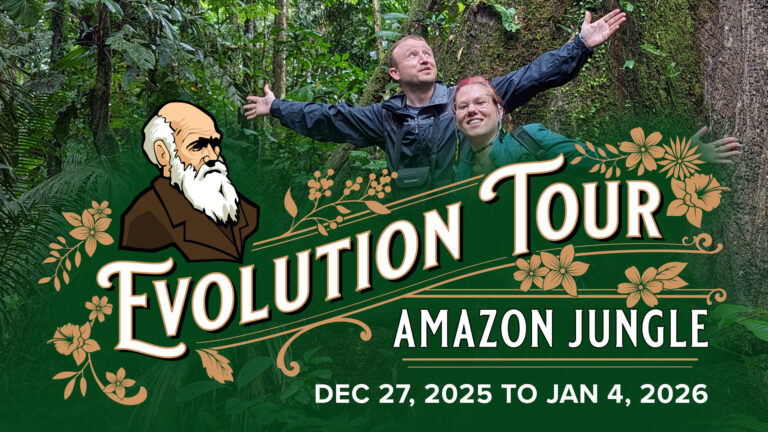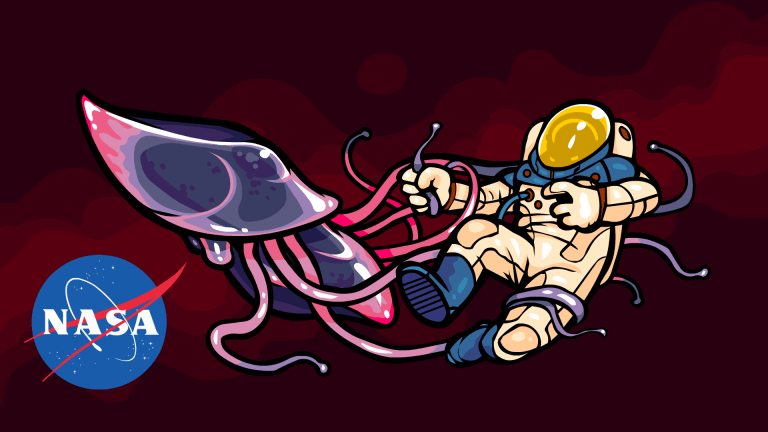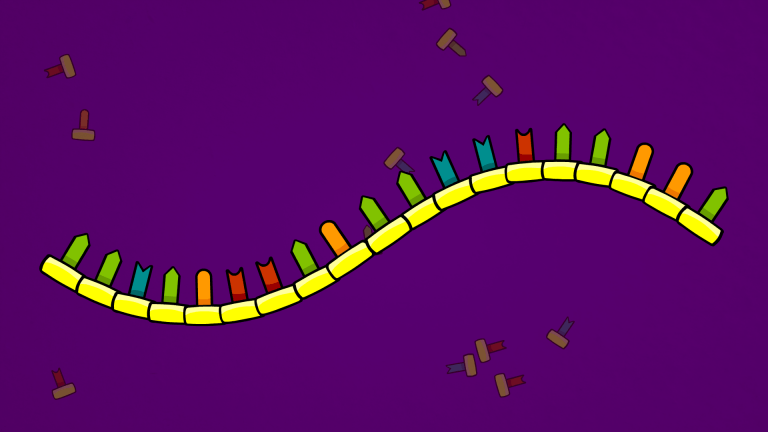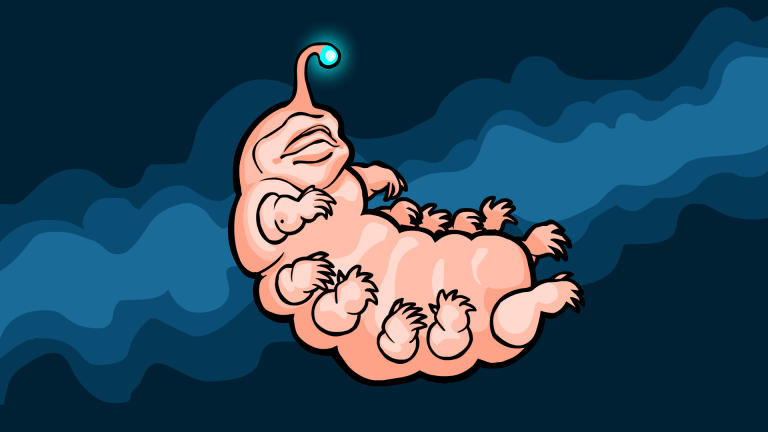Overview
Have you ever wondered how life first got started on Earth? So do scientists! Though the question has not yet been fully answered, a careful study of Chemical Evolution is beginning to shed light on this mystery.
In this film you will learn what Chemical Evolution is, how it works, and how it is different from Biological Evolution.
Explore Further
For an overview of research that has been done on fatty-acid membrane formation, check out this paper by Dr. Pierre-Alain Monnard and Stated Clearly’s science advisor Dr. David W. Deamer.
Membrane self-assembly processes: Steps toward the first cellular life
Read about the solubility of fatty acids in warm water. It is this solubility of fatty acids which allows natural selection to sort them out of the mess they are typically produced in during abiotic synthesis.
Solubility of Saturated Fatty Acids in Water at Elevated Temperatures
Learn of the bio-molecules discovered on meteorites. These biomolecules were not produced by living creatures, instead, they were created abiotically in a way similar to how we think the first biomolecules formed on Earth!
The Evolutionary Story Ahead of Biochemistry
Learn of research done by the Center For Chemical Evolution on a possible precursor to modern genes!
Self-Assembling Molecules Offer New Clues on Life’s Possible Origin
Check out what the Center for Chemical Evolution is up to
Center for Chemical Evolution
Animation
This animation is the first Stated Clearly video to include 3D graphics. The molecules were created by Jon Perry in a program called PyMOL which is a molecular visualization program commonly used by chemists.
Once the molecules were created, 3D artist Jason Moon used an open source program called Blender to animate them and style them in Stated Clearly fashion.
The rest of the graphics in this animation (those things that are not molecules) were drawn and animated in Adobe Flash by Jon Perry.
A few of the critter illustrations were drawn by Rosemary Mosco at Bird and Moon Comics.
Script
The script was written and narrated by Jon Perry. It was edited by Bret Johnson, Ram Krishnamurthy, David W. Deamer, Nancy Miorelli, Nicholas Hud, and Chris Parsons.
For Teachers
The content of this video meets criteria in the following Disciplinary Core Ideas defined by Next Generation Science Standards. Use our videos to supplement classroom curriculum.
Contributors
Our videos benefit from guidance and advice provided by experts in science and education. This animation is the result of collaboration between the following scientists, educators, and our team of creatives.
Advisors
- Christopher Parsons, MSc
- David Lynn, PhD
- David O. Conover, PhD
- Eric T. Parker, PhD
- Nancy Miorelli, MSc
- Nicholas V. Hud, PhD
- Ram Krishnamurthy, PhD
- Tom Cochran
Team
- Jon Perry
- Jeremiah Deasey
- Anthony Danzl
- Rosemary Mosco
- Tyler Proctor
- Jason Moon
Transcript
Stated Clearly Presents: What is Chemical Evolution?
Scientists who study the origin of life have reason to think that the first living cells on Earth came about through a natural process called chemical evolution.
What is chemical evolution? How does it work, and how is it different from biological evolution? To answer these questions, we’ll start by dissecting the terms and then look at an example of how chemical evolution can take simple molecules and organize them into complex, structured systems like those found in living cells.
The word evolution simply means change over time.
Biological evolution deals with changes in things which are able to reproduce. Living creatures make copies of themselves.
The change over time that we see in biological evolution isn’t just random change, often times, it is adaptive change. populations become better able to survive and reproduce within their environments. When conditions are right, biological evolution can even drive a species to develop brand new characteristics and abilities.
For this to happen, biological evolution typically needs three things:
Reproduction, Variation, and Selection.
Let’s see how this works: Many species of holly have smooth edged leaves, English holly however, is covered in spines which protect the plant from deadly predators! How did these weapons first evolve?
When a holly plant reproduces, its offspring often show random variation. They are slightly different from their parents, and slightly different from each other.
In a forest filled with grazing animals, individuals which happen to be harder to eat than their siblings are more likely to grow up and have children of their own. Nature, simply by being difficult to survive in, selects who gets to reproduce and pass on their new traits, and who does not.
In this case, mutations which simply caused the veins of these leaves to extend past their edges, gave rise to a brand new weapon.
The discovery of biological evolution was an incredible breakthrough in science. It explained how new, complex traits and abilities develop naturally in living things. The problem is, biological evolution depends on reproduction in order to work, but reproduction is an extremely complex process in and of itself. This begs the question how did reproduction first evolve? To answer this question, many researchers are investigating Chemical Evolution.
Chemical evolution refers to changes in things that need not be capable of reproduction. Examples could be individual molecules, or entire chemical systems. A chemical system is a group of molecules that interact with each other.
Molecules, structures, and chemical systems almost always evolve (or change over time), but they often evolve towards simplicity: solid iron corrodes into rust when it comes in contact with water. Proteins break down when exposed to too much heat.
If simple chemistry is to give rise to something advanced enough to reproduce, there must be situations in which chemical systems can grow in complexity, form new structures, and gain new functions. In order for this to happen, reproduction (which is needed in biological evolution) can be replaced with a much simpler process: repetitive production.
On planet Earth and all throughout the universe, powerful natural events take place in regular cycles: the heating and cooling of day and night, the repetitive eruptions of volcanic geysers, the rise and then fall of ocean tides — these events repetitively produce or “give birth” to new molecules and chemical systems. These products increase over time, and often develop new abilities as they interact with their environment.
Let’s see an example of how this process works:
This here is a special molecule called a fatty acid. It’s a collection of carbon atoms, hydrogen atoms, and oxygen atoms, all stuck together in a specific pattern.
Fatty acids are one of many complex molecules that living cells use inside their bodies. They build fatty acids with atoms they get from the environment. Scientists used to think that living cells were the only things able to consistently building fatty acids, but check this out:
Lab experiments have shown that if simple common gases, carbon monoxide and hydrogen, are heated up with minerals like those found in the Earth’s crust, a variety of complex carbon molecules, including fatty acids, begin to grow.
Living cells are not needed! This can happen naturally in underground chambers heated by the Earth’s magma.
As pressure builds, these molecules can belch up into pools of water where a simplified version of natural selection then takes over. Most particles blasted into the water will either float or they will sink. Nature selects against them staying in their watery environment.
Fatty acids, however, remain suspended in warm water, accumulating as the cycle repeats.
When fatty acid concentrations are high enough, they bunch together, automatically self assembling into a stable ball.
This happens because water molecules are attracted to the oxygen heads of fatty acids, sort of like a magnet, but water repels their oily carbon tails. When fatty acids pass near each other, their tails are pushed together by water, eventually forming a ball.
As fatty acid collections continue to increase, they join together to make large skins. If fluctuations in these skins happen to make the edges touch, water forces those edges to fuse together. The end result is a stable, hollow container, similar the membrane or skin of a living cell.
These containers have a brand new ability. They can trap other molecules inside, acting as an entirely new environment for chemical evolution to continue working within.
It’s important to note that these membranes do not qualify as living creatures – they can’t reproduce on their own in the same way that cells do – that said, the development of these membranes, along with many other molecules and chemical systems that scientists have observed, demonstrate an extremely important principle: Chemical Evolution can give rise to new characteristics and abilities.
Because of this, scientists hypothesize that under the right circumstances, Chemical Evolution could give rise systems that are fully capable of reproduction. If so, this would bridge the gap between chemical evolution and biological evolution, demonstrating that chemistry can indeed give rise to life.
Researchers at the Center for Chemical Evolution and other research groups around the globe, are working hard to test this hypothesis.
So to sum things up:
The main difference between chemical evolution and biological evolution, is that chemical evolution can produce new characteristics and abilities, without depending on reproduction. Because of this, chemical evolution is being investigated as a possible cause for the origin of life.
I’m Jon Perry, and that’s Chemical Evolution Stated Clearly
This animation was funded by the Center For Chemical Evolution, The national science foundation, NASA, and contributions from our viewers.
While we do receive grants from time to time, stated clearly is mainly funded by our fans. If you’d like to help out, visit us at StatedClearly.com and click “contribute”.
Special thanks to Tyler Proctor who worked on sound
And to our team of science advisors
Christopher Parsons, Dr David Deamer, Nancy Miorelli, Dr Nicholas Hud, and Dr Ram Krishnamurthy
Hope you enjoyed the show. Until next time, Stay Curious!





